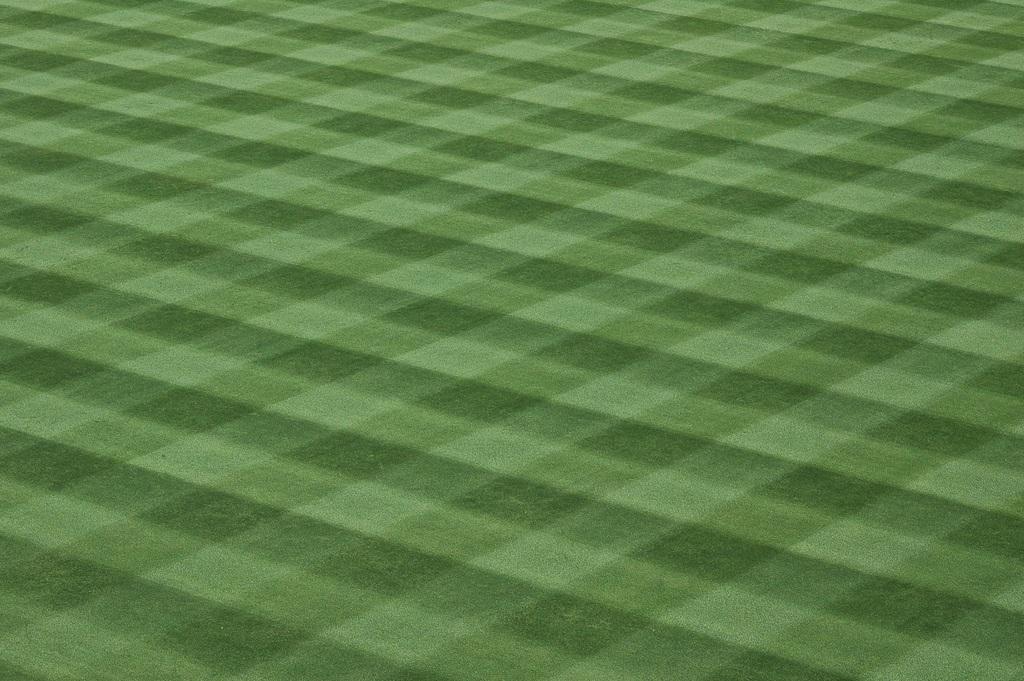Lawn striping enhances the aesthetic appeal of your lawn by creating light and dark stripes. This effect is achieved by bending grass blades in different directions. One side of a blade of grass is lighter than the other, and when sunlight reflects off these bent blades, the stripes become visible. Follow these tips to achieve the best results:
Get Started with the Right Grass and Mowing Height
The type of grass you plant significantly affects how well your lawn stripes.
- Best grasses for striping: Cool-season grasses like fescue, ryegrass, and bluegrass work best—they bend easily and hold stripes well.
-
Grass to avoid: Warm-season grasses like Bermuda and zoysia are stiffer and don't stripe as effectively.
Mowing height matters too:
-
Keep grass between 2.5 to 4 inches high.
-
Never remove more than 1/3 of the blade at once.
-
Taller blades bend better and show clearer striping.
Mowing Tips for Sharp, Clean Stripes
- Sharp Blades: Ensure your mower blade is sharp for a clean cut and better bending of the grass blades.
- Avoid Wet Grass: Don't mow or use a lawn striper kit when the grass is wet, as this can cause the striping to look matted.
- Expert Tip: For a premium look, lower your lawnmower blade by 1/4 inch and make a second pass for enhanced striping.
How to Create Beautiful Striping Patterns
Start by mowing around the perimeter of your lawn and then create parallel lines by turning your mower. For an easier approach, use a lawn striper kit or a tow-behind or push lawn mower roller. These tools attach to your riding lawn mower, lawn tractor, or garden tractor.
Mow your lawn as often as needed to maintain a height of 2.5 to 4 inches. Avoid cutting more than 1/3 of the grass height at a time to prevent damage. Taller blades bend more easily, enhancing the striping effect.

After mowing in the same pattern for a couple of weeks, change the mowing direction. This prevents the grass blades from always bending in the same direction, which can lead to uneven growth.
Creating Different Lawn Patterns
Straight Striped Lawn
- Preparation: Remove any objects from your lawn.
- Creating Stripes: Mow a straight line parallel to a straight driveway or path. Make tight turns or raise the mower deck at the end of each stripe.
- Finishing Touches: Mow a final strip around the edges to cover any noticeable turn marks.

Checkerboard Striping Pattern
- First Set of Stripes: Follow the instructions for creating straight stripes.
- Second Set of Stripes: Mow a second set of stripes at right angles to the first.
- Finishing Touches: Mow around the perimeter to hide any turn marks.

Circular Striping Pattern
- Perimeter Mowing: Mow around the perimeter twice.
- Center Start: Move the mower to the center and make the smallest circle possible.
- Alternate Circles: Mow each subsequent circle in the opposite direction with slight overlap.
- Final Perimeter Strip: Finish with a final stripe around the edges.
TIPS: Mow straight lines, keeping your eye on the area beyond any obstacles. Mow over unwanted turn marks to maintain even stripes.

Diagonal Striping Pattern
- Perimeter Mowing: Start by mowing around the perimeter.
- First Set of Diagonal Rows: Mow a set of straight rows diagonally, alternating directions.
- Second Set of Diagonal Rows: Mow a second set of diagonal rows at a right angle to the first.
- Finishing Touches: Mow around the perimeter again.

Benefits of Lawn Striping
-
Encourages Regular Maintenance:
Striping naturally motivates homeowners to care for their lawn more often. The desire to maintain clean, defined lines leads to consistent weeding, reseeding, and mowing—resulting in a healthier lawn overall.
-
Prevents Ruts:
By alternating mowing patterns regularly, striping helps prevent the formation of ruts or worn paths in the grass. This reduces uneven spots and promotes a smoother, more even lawn surface.
-
Ensures Even Growth:
Striping helps maintain a uniform grass height across the lawn. As blades are bent in different directions, more grass is exposed to sunlight, which promotes consistent growth and reduces patchiness.
-
Guides Lawn Care:
The visible lines created by striping can serve as helpful guides for lawn tasks such as fertilizing, aerating, or overseeding. It ensures better coverage and more efficient care routines.
-
Enhances Curb Appeal:
A well-striped lawn gives your home a clean, professional look. The visual appeal can make your yard stand out in the neighborhood and even increase the perceived value of your property.
Ready to transform your lawn into a masterpiece? Check out our website for the tools and equipment you need to achieve professional lawn striping results.

